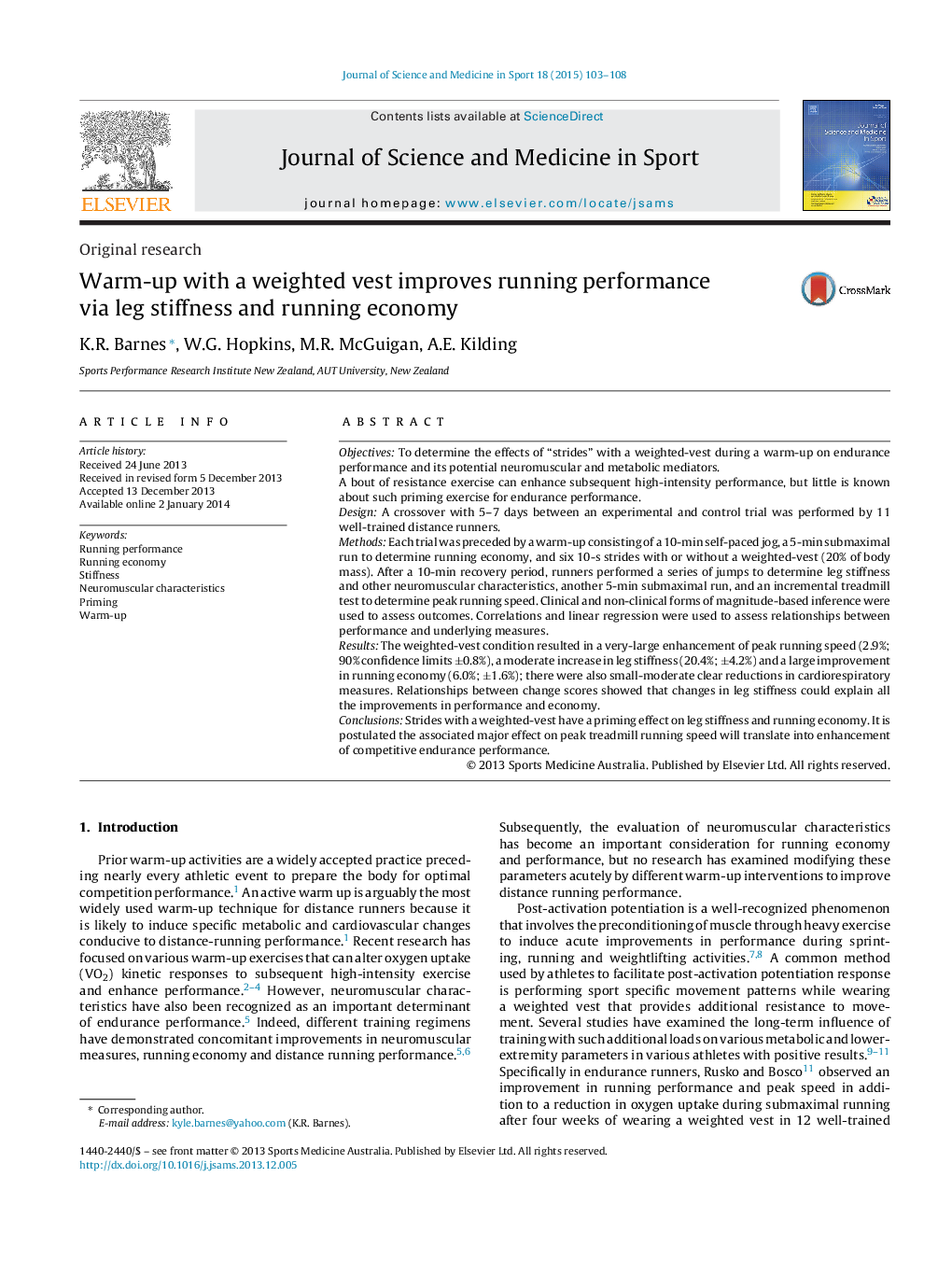| Article ID | Journal | Published Year | Pages | File Type |
|---|---|---|---|---|
| 2707614 | Journal of Science and Medicine in Sport | 2015 | 6 Pages |
ObjectivesTo determine the effects of “strides” with a weighted-vest during a warm-up on endurance performance and its potential neuromuscular and metabolic mediators.A bout of resistance exercise can enhance subsequent high-intensity performance, but little is known about such priming exercise for endurance performance.DesignA crossover with 5–7 days between an experimental and control trial was performed by 11 well-trained distance runners.MethodsEach trial was preceded by a warm-up consisting of a 10-min self-paced jog, a 5-min submaximal run to determine running economy, and six 10-s strides with or without a weighted-vest (20% of body mass). After a 10-min recovery period, runners performed a series of jumps to determine leg stiffness and other neuromuscular characteristics, another 5-min submaximal run, and an incremental treadmill test to determine peak running speed. Clinical and non-clinical forms of magnitude-based inference were used to assess outcomes. Correlations and linear regression were used to assess relationships between performance and underlying measures.ResultsThe weighted-vest condition resulted in a very-large enhancement of peak running speed (2.9%; 90% confidence limits ±0.8%), a moderate increase in leg stiffness (20.4%; ±4.2%) and a large improvement in running economy (6.0%; ±1.6%); there were also small-moderate clear reductions in cardiorespiratory measures. Relationships between change scores showed that changes in leg stiffness could explain all the improvements in performance and economy.ConclusionsStrides with a weighted-vest have a priming effect on leg stiffness and running economy. It is postulated the associated major effect on peak treadmill running speed will translate into enhancement of competitive endurance performance.
